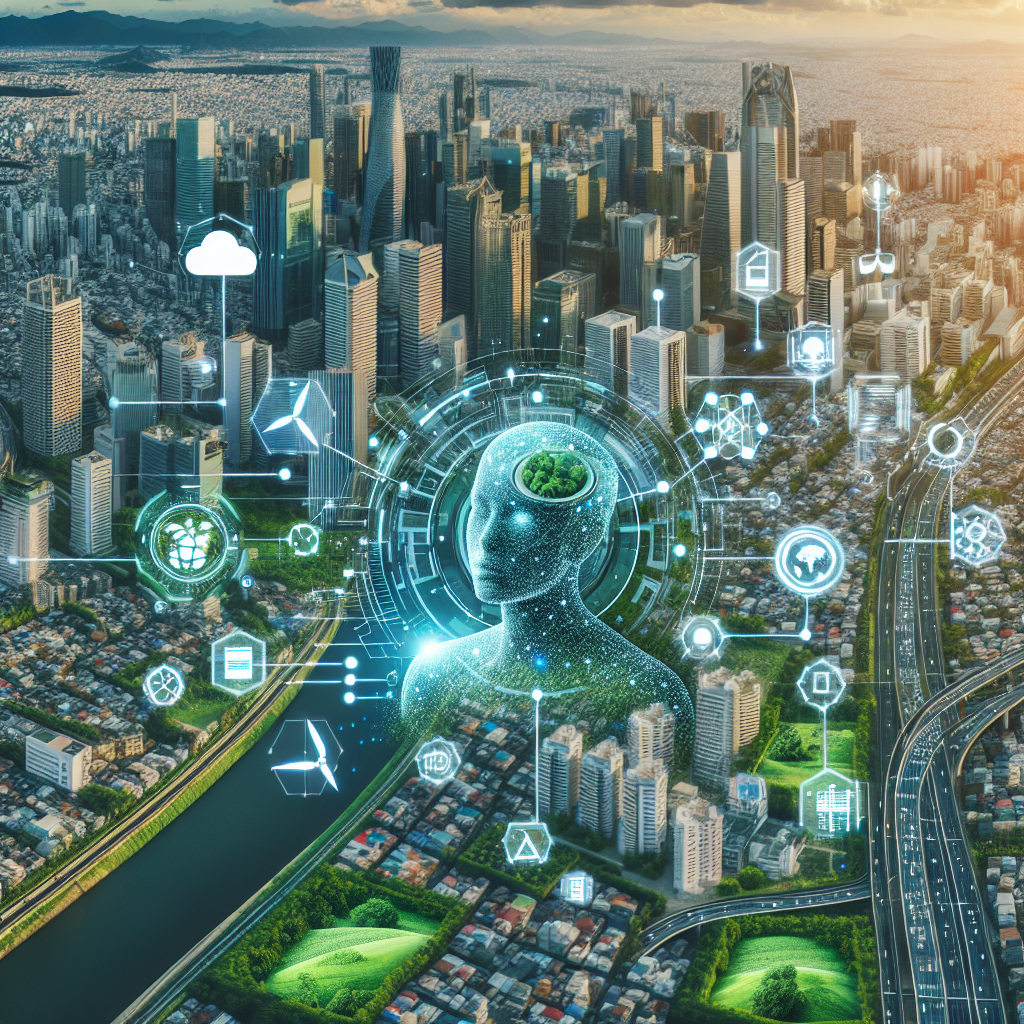Artificial intelligence (AI) is rapidly transforming many industries, and sustainable urban planning is no exception. With the increasing population and rapid urbanization, cities are facing unprecedented challenges in terms of resource management, infrastructure development, and environmental sustainability. AI technologies are providing new tools and solutions to help urban planners address these challenges and create more sustainable and resilient cities for the future.
One of the key ways in which AI is transforming sustainable urban planning is through data analysis and predictive modeling. AI algorithms can process massive amounts of data from various sources, such as sensors, satellites, social media, and government databases, to provide valuable insights into urban trends and patterns. This data can be used to predict future population growth, traffic patterns, energy consumption, and other key factors that influence urban development. By leveraging AI-powered predictive modeling, urban planners can make more informed decisions and develop more effective strategies for sustainable urban development.
AI is also revolutionizing transportation planning in cities. With the rise of ride-sharing services, autonomous vehicles, and smart mobility solutions, cities are facing new opportunities and challenges in managing transportation systems. AI technologies can help optimize traffic flow, reduce congestion, and improve public transportation services. For example, AI-powered algorithms can analyze traffic data in real-time to identify bottlenecks and suggest alternative routes, or predict demand for public transportation services to optimize schedules and routes. By integrating AI into transportation planning, cities can improve efficiency, reduce emissions, and enhance the overall quality of life for residents.
Another area where AI is making a significant impact on sustainable urban planning is in energy management. AI-powered systems can analyze energy consumption patterns in buildings, identify opportunities for energy efficiency improvements, and optimize energy usage in real-time. For example, AI algorithms can adjust lighting and heating systems based on occupancy patterns, or optimize the use of renewable energy sources such as solar panels and wind turbines. By using AI to manage energy resources more efficiently, cities can reduce their carbon footprint, lower energy costs, and improve overall sustainability.
AI technologies are also being used to enhance disaster preparedness and response in cities. With the increasing frequency and intensity of natural disasters, such as hurricanes, wildfires, and floods, cities are facing growing risks to their infrastructure and residents. AI-powered systems can analyze data from various sources, such as weather forecasts, satellite imagery, and social media, to predict and monitor potential disasters, and coordinate emergency response efforts. By using AI for disaster management, cities can improve their resilience, minimize damage, and save lives during emergencies.
In addition to these specific applications, AI is also enabling new approaches to urban design and planning. For example, AI-powered generative design tools can help architects and urban planners create more sustainable and innovative buildings and neighborhoods. By using AI algorithms to explore thousands of design options and evaluate their performance against various criteria, designers can develop more efficient and environmentally friendly solutions. AI can also help optimize land use, improve green spaces, and design more walkable and bike-friendly neighborhoods. By integrating AI into the design process, cities can create more livable, resilient, and sustainable urban environments.
Overall, AI is transforming sustainable urban planning by providing new tools and solutions to address the complex challenges facing cities today. By leveraging AI technologies for data analysis, predictive modeling, transportation planning, energy management, disaster preparedness, and urban design, cities can develop more efficient, resilient, and sustainable solutions for the future. As AI continues to advance, urban planners and policymakers will have new opportunities to create smarter, more sustainable cities that benefit both residents and the environment.
FAQs:
Q: How is AI being used in transportation planning in cities?
A: AI is being used in transportation planning in cities to optimize traffic flow, reduce congestion, and improve public transportation services. AI-powered algorithms can analyze traffic data in real-time to identify bottlenecks and suggest alternative routes, or predict demand for public transportation services to optimize schedules and routes.
Q: How is AI helping cities manage energy resources more efficiently?
A: AI-powered systems can analyze energy consumption patterns in buildings, identify opportunities for energy efficiency improvements, and optimize energy usage in real-time. For example, AI algorithms can adjust lighting and heating systems based on occupancy patterns, or optimize the use of renewable energy sources such as solar panels and wind turbines.
Q: How is AI being used in disaster preparedness and response in cities?
A: AI-powered systems can analyze data from various sources, such as weather forecasts, satellite imagery, and social media, to predict and monitor potential disasters, and coordinate emergency response efforts. By using AI for disaster management, cities can improve their resilience, minimize damage, and save lives during emergencies.
Q: How is AI enabling new approaches to urban design and planning?
A: AI-powered generative design tools can help architects and urban planners create more sustainable and innovative buildings and neighborhoods. By using AI algorithms to explore thousands of design options and evaluate their performance against various criteria, designers can develop more efficient and environmentally friendly solutions. AI can also help optimize land use, improve green spaces, and design more walkable and bike-friendly neighborhoods.

